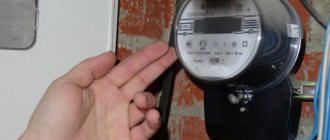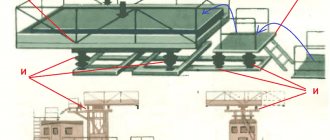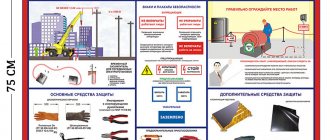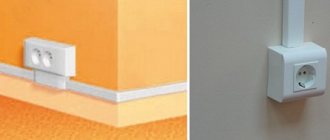The nature of static electricity
Their school textbooks know that a discharge can only jump between a positively charged object and a negatively charged one. And in most cases, we ourselves are the carriers of the positive charge. Upon contact with a voluminous metal object or another person (since our body is 80% water, the tissues of the human body are a priori excellent conductors of electricity), a discharge occurs, that is, a phenomenon when your body is discharged, otherwise it is freed from its positive charge. But how to remove static electricity without harmful consequences and discomfort? Let us first examine the background of its occurrence.
Static electricity on hair
The following recommendations will help you get rid of electrostatics in your hair:
Styling products
Most different lotions, gels, mousses, sprays and hairsprays contain antistatic ingredients. These products should only be applied to the hair itself! To do this, you need to squeeze a small amount of product into your palm, rub it lightly and distribute it lightly through frizzy hair. People with thin, dry and split ends should use products with an oily structure (for example, hair silk) when styling. These products, when applied correctly and evenly (1-2 drops), will make your hair shiny, smooth and manageable. Special antistatic wipes can help eliminate static electricity in your hair. They can be used to wipe both the hair itself and hair brushes. These wipes are absolutely safe and will not cause any harm to your hair.
If you need emergency hair care, then you should contact a beauty salon. Here they can provide a currently popular service - hair lamination. It consists of covering each hair with a protective film, which saves them from dryness for a while. As a result, the hair looks soft and silky.
Shampoo and conditioner
One of the main reasons for electrostatics in human hair is the lack of moisture in it (especially in winter). To prevent this problem, you need to select and use the right shampoo and conditioner. Good cosmetics will make your hair voluminous and shiny.
Folk remedies
The simplest and most effective method of combating electrostatics is to spray mineral or thermal water next to the hair. You can also comb your hair with a brush soaked in such water. If there are no styling products or water nearby, you should lubricate your hands with moisturizing cream or lotion, and then smooth your hair with your palms. Oils (eucalyptus, lavender and rose) and black tea have good antistatic agents. It is enough to apply just a couple of drops of oil to the comb and the effect is guaranteed. In addition, it will rid your hair of static, make your hair healthier and give it a unique aroma. Black tea, as well as a decoction of various herbs (chamomile, nettle, currants, etc.) are suitable for rinsing washed hair.
When washing your hair, it is necessary (at least once a week) to massage your head, rubbing in olive, castor or burdock oils.
>
Recommended
In order for your hair to look well-groomed and free from static electricity, you should do the following: - forget about cheap plastic combs. It is better to use hair brushes with natural bristles (a good option is a wooden comb, a comb made of carbon, ebonite, or a bone comb) and with blunt teeth. There are also special antistatic plastic and silicone combs; – washed hair should always be rinsed with a decoction of medicinal herbs, water with lemon juice, or just cool water; – dry your hair correctly (in the direction of its growth); – remove split ends (you can trim your hair either at home or at the hairdresser); – when indoors, always take off your hat; – along with external hair improvement, internal hair improvement is necessary - take vitamin complexes (the composition should contain zinc and biotin).
Prohibited
In most cases, we ourselves create conditions favorable for the occurrence of static electricity. If you wish, you can get rid of it, but to do this you need to follow several rules: – do not dry your hair with a hairdryer without a built-in ionizer and use curling irons, curling irons, irons, thermal curlers and other devices that “dry” your hair as little as possible; – do not comb your hair too hard and for a long time, so as not to damage the roots of the hair and not to electrify its ends; – do not tighten your hair too tightly with hairpins and elastic bands; – do not wear tight hats; – you should not touch your hair (straighten or smooth it) as soon as you enter the room from the street, it is better to wait a few minutes;
Where does the positive charge in our body come from?
Let us explain it in a language that is accessible and understandable to everyone, even those who are not experienced in physics. Material objects accumulate any charge through friction. Each atom that makes up any material body (including the human one) has electrons rotating around its nucleus. Let's give a simple example.
When we take off our clothes over our heads and throw the blouse on the sofa, a large number of electrons, through friction, seem to be erased from their orbits and transferred to the blouse that we took off. It is well known that electrons are negatively charged particles, and therefore our blouse becomes negatively charged, since in its tissues there is now an excess of electrons from our body, while we ourselves become positively charged, since there is now a shortage of negatively charged particles in the tissues.
If we then decide to touch a metal object or another person, we will feel an electric shock. A microscopic lightning discharge will appear between the fingertips of the hand and the object, during which a discharge will occur in the literal sense of the word. Our body, through this discharge, will absorb the missing amount of electrons from this object, and the energy in it will again become balanced. Plus and minus will be balanced again.
How does static electricity accumulate in our body?
But in order for an imbalance of charged particles to occur in your body, you don’t have to take something off yourself. Sitting in a car, we rub against the seat. As we walk, clothing can remove some electrons from our body. Any friction helps to transfer a certain amount of electrons from somewhere to something. And now you have already turned into a charged material body, which, upon contact with any conductor (metal or other fairly massive current-carrying object), will definitely discharge, that is, it will absorb the missing electrons from this object through a spark that jumps between you and this object. But how to remove static electricity from yourself and surrounding objects?
Benefits and harms
If the benefits of this phenomenon remain in question, then its harm to humans is obvious. First of all, this affects the operation of electronics and electrical devices. The discharge causes destruction of microcircuits and transistors and causes breakdown of capacitors. A powerful discharge can damage the winding of an electric motor.
The resulting electromagnetic field causes interference in radio receivers, negatively affecting the operation of telephones and computers, and disrupting communications.
The harm of static electricity is expressed in the magnetic component that accompanies this phenomenon. The attraction between objects has a negative effect when cutting and cutting light, synthetic materials.
When sufficient electrical charge accumulates, a spark is formed that can ignite flammable substances. This fact poses a serious threat to gas stations, storage facilities for flammable and explosive items, and the flour-grinding and coal industries.
The phenomenon contributes to the accumulation of dust, which negatively affects the cleanliness of the environment. Specifically for people, its harm is expressed in the disobedience of dry hair during combing, discomfort when touching “charged” clothing, as well as discomfort that occurs at the psycho-emotional level.
As for the benefits of this effect, there are few examples. The phenomenon is used for educational and scientific purposes. Its attractive properties have found use in some dust cleaning products, in painting and in mixing finely dispersed substances.
This feathered broom collects dust well due to the resulting static electricity.
The first and main rule
A sufficiently grounded object will never accumulate static electricity. What does "grounded" mean? This means constant contact with the earth's surface. But in order to “contact the earth’s surface,” the shoes must have conductive soles. At the present time, this is hardly possible, since all modern shoes are made with soles made of synthetic polymers, rubber, rubber, etc.
“But how to remove static electricity from a person in this case?” - you ask. How else can you “ground yourself”? The answer is simple, and it lies in increased air humidity. If the level of air humidity in the room is even slightly higher than usual, the air itself, saturated with moisture, will become an excellent “discharger” for your body. This is why static electricity does not occur when humidity is high, just as it does not occur if you, say, get wet in the rain.
Static electricity on clothes
1. The most effective and efficient method to get rid of electrostatics on clothes is not to wear things made of synthetic materials, but to give preference to natural ones (silk, linen, cashmere, cotton, etc.). After all, natural fabric absorbs moisture and, as a result, practically does not accumulate charges.
2. An important point is washing things. When rinsing, it is advisable to add a certain amount of fabric softener to the water, which has an antistatic effect. In this case, be sure to follow the recommendations on the packaging, which indicate the types of fabrics for which this product is intended.
3. If it is impossible to use fabric softener (for example, when washing outerwear), then you can use an antistatic spray. To do this, spray the spray evenly over the surface of the clothing at a distance of 20-30 centimeters. This procedure is best carried out in a well-ventilated area (for example, a balcony), because The product has an unpleasant, persistent odor. Clothes can then be put on after some time.
4. You can quickly remove static electricity from clothes by using a spray bottle with water and adding the required amount of fabric softener. This mixture should be lightly sprayed onto clothing. True, this method eliminates electrostatics only for a short period of time.
5. Water helps solve the problem of static electricity. You should wet your hands and smooth the clothes with light movements so that they become a little damp. This method has a short-term effect.
6. When wearing clothes made from artificial fabrics, you should not wear several things at once (it is possible to combine artificial fabrics with natural ones).
7. Wearing shoes with leather or rubber soles will avoid the accumulation of electrical charges on the body. Cotton insoles are also inserted into shoes or special strips with an antistatic effect are glued to the sole.
How to remove static from yourself painlessly?
The spark during discharge is not as painful as it is unpleasant. How to remove static electricity from your body or, more precisely, how to discharge yourself without receiving an unpleasant electric shock? To do this, you need to take any small steel product, such as a nail file, a teaspoon or tweezers, as a result of which the positive potential of your body will spread to them. Next, you should touch the edge of the tweezers to the radiator, car or other massive metal object.
Then the spark will jump not between your fingers and the tweezers, but between the tweezers and the object you touch with them. In this case, you will not experience any negative feelings. You just have to do this over and over again at certain intervals, otherwise sooner or later the charge will accumulate in you again, and you will still receive an electric shock.
Relieving stress at home
The first step is to get rid of the trouble at home. After all, this is where we spend most of our free time.
Using a humidifier
Humidifiers are especially important in winter, when the air in the apartment is dry due to radiators. This device will help relieve static electricity, making it easier for you to breathe. If you don't have a humidifier, houseplants can partially replace it. You can also leave the hot kettle on and add various aromatic herbs. This will help humidify the air and give the house a pleasant smell.
We treat carpets with antistatic agent
Another way to solve the problem is to buy an antistatic agent for carpets in the store. The spray must be applied to the coating and wait until it dries. You can also make the product yourself if you don’t want to buy it. To do this, add a little laundry softener to a spray bottle of water, shake the mixture, and then spray onto the carpet.
Antistatic wipes for furniture
In addition to sprays, stores sell special antistatic wipes for furniture. They just need to wipe the upholstery. You can replace it with a regular antistatic agent, which is suitable not only for carpets, but also for furniture. To do this, simply spray the spray over the upholstery and wait until the material dries.
What clothes are prone to the accumulation of static tension?
Many people wonder how to remove static electricity from clothes. The fact is that clothing itself cannot accumulate either a positive or a negative charge. For it to accumulate, there needs to be friction between the pieces of clothing. And friction occurs when wearing clothes, taking them off, etc.
And in these cases, the charge accumulates not in the clothes themselves, but in your body. Only at the moment of parting with clothes can a spark fly between you and a wardrobe item. This is especially true for clothing made from synthetic fibers. Taking a synthetic sweater over your head, you can see with your own eyes the discharges flickering between its fabric, the fabrics of the clothes remaining on you, your hair and your body. This is especially noticeable when the lights are off. Even the air is filled with the smell of ozone, which occurs only during moments of electrical discharges, and the hairs on your head stand on end as they begin to repel each other.
But the piece of clothing that shocked you goodbye does not completely return to your body all the electrons taken from it, and therefore, after such undressing procedures, you always turn into an object with a “plus” sign, which sooner or later will be discharged to “minus”.
To prevent static charge from accumulating while wearing synthetic clothing, you need to wash it with special conditioners that prevent the wardrobe item from collecting electrons from your body. There are many such conditioners, and they are all sold in any household chemical stores.
What causes this static discharge?
A static discharge is formed due to electrification at the edge of two areas or materials. This effect is obtained due to the friction of a dielectric with an isolated electrically conducting plane or the contact of two dissimilar substances with different atomic and molecular powers. Moreover, the cause of this may not always be an electrical device. Often this can be:
- carpet;
- clothing made of wool, silk or artificial fibers;
- armchair;
- person, etc.
In order to remove static electricity from a person, there are many ways: - increase the humidity in the house by opening a window or installing a humidifier;
- touch a grounded device;
- place a cotton cloth between those types of materials that accumulate static;
- minimize contact between two moving bodies. After all, a large amount of friction only maintains static charges. When walking on carpets, you may want to experiment with changing the soles of your house shoes.
Removing static electricity from clothing is quite simple if you follow the basic rules. Use an antistatic agent. It will help remove the electrical charge from the fabric. They are produced in the form of sprays, which is very convenient for use. In many stores you can find clothes rinsers that contain antistatic agents. Also protects well against static and skin cream.
Various gels, lotions, sprays and varnishes that contain an antistatic ingredient will help remove static electricity from your hair. They should only be applied to hair. People who have dry, thin and split hair need to use special oil-based products during styling. This is, for example, silk for hair.
"Evil" car
Very often, a static discharge spark jumps between the car and the motorist (passenger). What should you do if your car constantly shocks you? How to remove static electricity from a car so that every time you get out of the car, it doesn’t “bite” you goodbye?
Here the problem, again, lies in you, that is, in your behavior behind the wheel and in the materials from which the car seat covers or the seat itself are made. When you're behind the wheel, you're still moving, creating friction. A charge accumulates in you, and the rubber mats of the car prevent discharge, and the voltage remains in you the entire time you are in the car, until you, getting out of it, touch part of your body to the metal body of the car. At this moment, discharge occurs. There is little pleasant, and therefore you should stock up on special means for treating car seats. These antistatic agents come in the form of aerosols. By spraying this product on your seat covers, you will prevent them from accumulating a positive charge during friction.
But a car is a thing that can itself accumulate static, especially in dry weather. To prevent this from happening and your car not to shock you in vain, buy a special strip (strap) at an auto parts store, which is attached under the rear bumper and is powered to the body of the car. Current types of antistatic straps are even attached to the exhaust pipe. The tip of such a strip, constantly in contact with the ground, will prevent the accumulation of static in the body.
Influence
The most striking manifestation of static electricity can be found in industrial production. Due to his fault, unexpected ignitions of flammable materials occur due to sparks generated when the operator comes into contact with grounded equipment. Electrostatic energy can carry a discharge of 1.4 joules, which is enough to ignite flammable substances.
Interesting ! To prevent such situations, GOST was developed, according to which the accumulated energy from a static charge cannot exceed 40% of the required energy for ignition of substances or materials.
The effect of static electricity affects the hair
Humans are carriers of particles that accumulate on clothing. In this case, the main condition for the accumulation of charge is the presence of shoes with soles that do not allow electricity to leave the body.
A person feels static on himself in the form of prolonged tension or as a momentary discharge. In the first case, there is a slight tension over a long period of time, and in the second there is a short-term release, felt as a tingling sensation. Rarely does the discharge power exceed 7 joules, so electricity does not pose a direct danger, but there is an indirect effect. It manifests itself in the form of muscle contraction, which can cause work-related injuries.
You might be interested in Soldering hair dryer
Attention ! After muscle contraction, body parts can involuntarily become caught in working and moving mechanisms.
Constant discharges begin to affect a person. It becomes more difficult for him to work, irritability and fatigue increase. The rhythm of sleep and the functioning of the nervous system as a whole worsens.
"Evil" computer
The computer itself will not be able to accumulate a static discharge, since its entire body is powered to ground, that is, to minus from the outlet. Therefore, the question of how to remove static electricity from a computer does not make sense in itself. Static electricity, if any household appliance plugged into an outlet shocks you, should be removed not from it, but from you. This is done using the methods described above.
How to remove static electricity in an apartment? ↑
Static charge can cause various problems. Despite the fact that the current is very small, the potential difference in the area of the electrostatic discharge can reach several tens of kilovolts. The formation of static electricity in an apartment depends on factors such as:
- air humidity;
- presence of dust;
- type of finishing, material from which the furniture or the room itself is made.
The correct placement of household electrical devices, protective grounding and routine inspection of equipment play a very significant role. The service life of devices will increase significantly if their moving parts are protected from electrification. It is necessary to wash and wipe off dust everything that “moves”. Of course, in everyday conditions it is impossible to obtain a “breakdown voltage of an electrostatic field”, which can cause a fire, but it can cause harm to equipment and people.
Static electricity can be determined using a special measuring device that can show its presence. In addition, it is necessary to check lightning protection, which will protect equipment and people.
Engineering has all the necessary tools for high-quality inspection of lightning protection systems, a well-coordinated team of professionals and licenses that give the right to carry out all the necessary tests and measurements. By choosing the ProfEnergia electrical laboratory, you are choosing reliable and high-quality operation of your equipment!
If you want to order an inspection of lightning protection systems or ask a question, please call.
"Evil" phone
Many phone models have metal parts in their casing, contact with which can also cause a small spark to jump between the gadget and you. The question of how to remove static electricity from a phone has the same explanation, namely, the “plus” accumulates in you, and not in the gadget. Get rid of the accumulated positive charge in your body, and the phone will not “snarl” at you.
Means of protection against static electricity. General technical requirements
GOST 12.4.124-83
UDC 621.316.9:006.354 Group T58
STATE STANDARD OF THE USSR UNION
Occupational Safety Standards System
PROTECTION AGAINST STATIC ELECTRICITY
General technical requirements
Occupational safety standards system. Means of static electricity protection. General technical requirements
OKSTU 0012 Date of introduction from 01/01/84 to 01/01/89
DEVELOPED by the All-Union Central Council of Trade Unions Ministry of Internal Affairs of the USSR Ministry of Higher and Secondary Special Education of the USSR Ministry of Chemical Industry of the USSR Ministry of Electrical Engineering Industry of the USSR EXECUTORS V. N. Matkov; V. N. Tolstopyatoe; G. P. Alvarkdze; A. P. Kupchin; V.V. Zakharchenko (topic leaders); M. N. Ermakova; G. N. Komarova; A. S. Dalnov; A. M. Kalantadze; V. S. Kukharenko; V. N. Verevkin; A.N. Morovshchik; B.K. Maksimov; HELL. Butt; O.V. Kharlamov; F.G. Portnov; A.P. Jerusalem; V.P. Amiranashvili; V.V. Moskvicheva
INTRODUCED by the All-Union Central Council of Trade Unions Deputy. Head of the Labor Safety Department I. N. Burlutsky
APPROVED AND ENTERED INTO EFFECT by Resolution of the USSR State Committee on Standards dated January 27, 1983 No. 428
The validity period was removed by Decree of the State Standard of Russia No. 564 dated June 22, 1992. (IUS No. 9 of 1992).
REISSUE. June 1986
This standard applies to means of protecting workers from the dangerous and harmful effects of static electricity (SES) and establishes general technical requirements for them. The standard does not apply to means of protection against static electricity in electrical and radio equipment, capacitors, long power lines, cables, antennas, vehicles, and fire protection devices. The terms used in this standard and their explanations are given in the reference annex.
1. CLASSIFICATION
1.1. According to GOST 12.4.011-75, protective equipment for workers is divided into collective protective equipment and individual protective equipment. 1.2. According to the principle of operation, collective protection against static electricity is divided into the following types: grounding devices; neutralizers; humidifying devices; anti-electrostatic substances; shielding devices. 1.2.1. Based on the principle of ionization, neutralizers are divided into: induction; high voltage; radial; aerodynamic. 1.2.2. Based on the nature of their action, humidifying devices are divided into: evaporative; spray 1.2.3. According to the method of application, anti-electrostatic substances are divided into: introduced into the volume; applied to the surface. 1.2.4. Shielding devices according to their design are divided into: visors; partitions. 1.3. Depending on the purpose, personal protective equipment is divided into: special anti-electrostatic clothing; special anti-electrostatic shoes; anti-electrostatic safety devices (rings and bracelets); anti-electrostatic hand protection.
2. GENERAL TECHNICAL REQUIREMENTS
2.1. SZSE used in fire and explosion hazardous areas must comply with the requirements of GOST 12.1.004-85, GOST 12.1.010-76, GOST 12.1.011-78, GOST 12.1.018-79, GOST 12.1.044-84, GOST 12.2 .020-76, GOST 12.2.021-76, GOST 22782.1-77, GOST 22782.2-77, GOST 22782.4-78, GOST 22782.5-78, rules for the design of electrical installations approved by Gosenergonadzor (PUE), and rules for the manufacture of explosion-proof and mining equipment, approved by the USSR Gosgortekhnadzor. 2.2. SZSE must ensure compliance with the requirements of sanitary and hygienic standards for permissible electrostatic field strength, approved by the USSR Ministry of Health. 2.3. SZSE should not have a negative impact on the technological process. 2.4. SZSE must exclude the occurrence of spark discharges of static electricity with an energy exceeding 40% of the minimum ignition energy of the environment, or with a charge value in the pulse exceeding 40% of the ignition value of the charge in the pulse for the environment. 2.5. Special clothing, special shoes, antistatic safety devices provide protection when working with electrical installations with voltages up to 1000 V. 2.6. Requirements for grounding devices 2.6.1. Regardless of the use of other SZSE, grounding must be used on all electrically conductive elements of process equipment and other objects where electrostatic charges may arise or accumulate, and comply with the requirements of GOST 12.2.007.0-75 and GOST 21130-75. 2.6.2. The implementation of grounding devices must comply with the requirements of GOST 12.1.030-81 and PUE. The resistance value of a grounding device intended solely for protection against static electricity should not exceed 100 Ohms. 2.6.3. Grounding of pipelines and other objects located on external overpasses must be carried out in accordance with the current instructions for the design and installation of lightning protection of buildings and structures, approved by the USSR State Construction Committee. 2.6.4. Grounding devices must be used on electrified moving parts of production equipment that are isolated from grounded parts. 2.7. Requirements for neutralizers 2.7.1. Neutralizers must comply with the requirements of GOST 12.1.006-84, sanitary and hygienic standards for permissible levels of air ionization in industrial and public premises, radiation safety standards, basic sanitary rules for working with radioactive substances and other sources of ionizing radiation, approved by the USSR Ministry of Health. 2.7.2. The concentration of ozone and nitrogen oxides emitted by operating neutralizers should not exceed the standards established by GOST 12.1.005-76. 2.7.3. General electrical safety requirements for high-voltage neutralizers are in accordance with GOST 12.1.019-79 and PUE. 2.7.4. Radioisotope neutralizers must be equipped with a blocking device that closes the source of radioactive radiation when not in use. 2.7.5. The housings of radioisotope neutralizers must display radiation safety signs in accordance with GOST 17925-72. 2.8. Anti-electrostatic substances must ensure a reduction in the specific volumetric electrical resistance of the material to a value of 107 Ohm m, and the specific surface electrical resistance to a value of 109 Ohm, the method for determining which is specified in GOST 6433.2-71, GOST 6581-75. The content of antistatic vapors in the working area should not exceed the maximum permissible concentrations according to GOST 12.1.005-76. 2.9. Shielding devices must be grounded in accordance with the requirements of the PUE. 2.10. Requirements for anti-electrostatic special clothing 2.10.1. For the manufacture of anti-electrostatic special clothing, materials with a specific surface electrical resistance of no more than 107 Ohms should be used. Method for determining specific surface electrical resistance according to GOST 19616-74. 2.10.2. The electrical resistance between the conductive element of anti-electrostatic special clothing and the ground should be from 106 to 108 Ohms. 2.11. Requirements for anti-electrostatic special shoes 2.11.1. The electrical resistance between the heel pad and the running side of the shoe sole should be from 106 to 108 ohms. 2.12. Requirements for anti-electrostatic safety devices 2.12.1. Anti-electrostatic rings and bracelets should provide electrical resistance in the human-ground circuit from 106 to 107 ohms. 2.12.2. The grounding conductor of the anti-static wrist strap must allow freedom of movement of the hands. 2.13. Personal protective equipment against static electricity must be marked in accordance with GOST 12.4.103-83.
APPENDIX Reference
| Term | Explanation |
| Protective grounding | According to GOST 12.1.009-76 |
| Grounding device | A set of grounding conductors and grounding conductors |
| Ground electrode | A conductor or a set of metallic interconnected conductors in contact with the ground |
| Static Eliminator | A device designed to reduce the level of electrostatic charges by ionizing an electrifying material or environment near its surface |
| Induction Static Eliminator | A neutralizer that provides ionization of a material or environment under the influence of a field of electrostatic charges |
| High Voltage Static Eliminator | A neutralizer that ensures the ionization of a material or medium by exposure to high voltage applied to its electrodes |
| Beam neutralizer for static electricity | A neutralizer that provides ionization of a material or environment under the influence of radiation (radioactive, ultraviolet, laser, thermal, etc.) |
| Radioisotope static electricity neutralizer | Neutralizer, the principle of operation of which is based on the ionization of the air environment by radioactive sources |
| Aerodynamic static electricity neutralizer | A neutralizer in which an ionized medium is supplied to the surface of a charged material by an air stream |
| Humidifying device | A device that provides the necessary humidity to the surface or volume of charged material |
| Shielding device | A device that ensures a reduction in the electrostatic field strength and the number of air ions in the working area to acceptable values due to their concentration in a limited volume outside this area |











